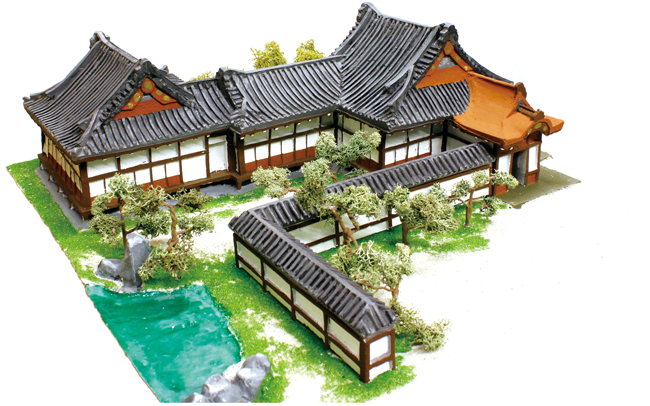
当たり前に日本人として生きてきた。でも海外に出てから、日本について何も知らないことに気が付いた。そこで、日本が世界に誇る世界遺産について建立年順に勉強しようと思う。興味がある人も、そうでない人も、しばしお付き合いを。
I’ve lived my whole life as a Japanese person, but when I went overseas I realised I know practically nothing about Japan. So now I’m learning about Japan’s World Heritage Sites, from oldest to newest. Those who are interested, and even those who are not, come along for the ride.

撮影協力 / メルボルン総領事館 Thanks to the Consulate-General of Japan, Melbourne
○○○○○ 元離宮二条城: 江戸幕府の歴史を伝える唯一無二の城 ○○○○○
今回は、1994年に『古都京都の文化財』のひとつとして世界文化遺産に登録された、元離宮二条城(もとりきゅうにじょうじょう)を紹介します。二条城は、“江戸時代を代表する建築様式、庭園様式、文化的背景を今に伝えていること”、“日本全国の建築様式、庭園様式の発展に大きな影響を及ぼしたこと”などが評価され、登録されました。『古都京都の文化財』の中で、唯一神社や仏閣ではないのも興味深いですね。
元離宮二条城という名称は比較的新しく、城の歴史と深く関係しています。二条城は、江戸幕府初代将軍 徳川 家康(とくがわいえやす)が、1603年に京都御所の守護所、宿泊所として造営しました。家康が建てたのは二の丸御殿と天守部分でしたが、第3代将軍 家光(いえみつ)が1624年に大改修を行い、本丸御殿と五層の天守閣を整備し、現在の形になりました。
二条城の中心的な建物のひとつである二の丸御殿は、桃山文化を代表する武家風書院作りになっていて、約3,000面以上の障壁画(しょうへきが)が残されています。その大半は1626年の大改修の際に、狩野 探幽(かのう たんゆう)率いる狩野派の絵師達が描いたものです。特に有名なのが、大名の控え室、遠侍 ( とおざむらい )の一の間から三の間に描かれた勇壮な虎と豹の障壁画です。この三間は「虎の間」とも呼ばれています。当時の日本には生きている虎や豹が居なかったため、虎や豹の皮を見ながら描いたそうで、凄い想像力です。その他にも、絢爛豪華な金碧(きんぺき)障壁画が数々あり、桃山時代から江戸時代初期にかけての美を今に伝える貴重なものとなっています。17世紀から400年間、焼失することなく現代まで残っているなんて奇跡と呼びたくなりますね。また二の丸御殿の廊下は、人が歩いたり、侵入者などがあった時に気付きやすいように、キュッキュッと音が出る「うぐいす張り」という仕掛けになっています。
そんな二条城ですが、1634年に家光が上洛して以来、幕末まで将軍の入城がなく、相次ぐ雷や大火により、天守閣、本丸御殿、隅櫓(すみやぐら)などが焼失、残った建築物も風雨にさらされ徐々に老朽化していきます。家光の入城から約230年間後の1863年、第14代将軍 家茂(いえもち)が上洛する際に、やっと二の丸御殿を中心に修復が施されました。1866年には、慶喜(よしのぶ)が第15代将軍職を継ぎ、翌1867年には、慶喜が諸大名を二の丸御殿大広間一の間に集め、大政奉還(たいせいほうかん:政権を天皇に返上)を発表し、江戸幕府の長い歴史が幕を下ろしました。こうして二条城は、江戸時代の始まりと終わりを象徴する場所となります。その後、現在の内閣に当たる太政官代が置かれたり、京都府庁舎になったりと、なんとも落ち着かない二条城ですが、1884年に宮内庁の所管になり、呼び方も『二条離宮』になります。これで落ち着いたと思いきや、1939年に宮内省から京都市に下賜され、現在の名称である『元離宮二条城』になりました。
二条城には建物だけでなく、二の丸には桃山様式の池泉回遊式庭園、本丸には洋式の本丸庭園があり、早春は梅林、春は桜、初夏はツツジやサツキ、夏はしだれえんじゅ、秋に紅葉と四季折々の庭園美が楽しめます。
次回は、世界遺産に登録された日光の社寺のひとつ、日光東照宮をご紹介します。
○○○ Nijo Castle: a castle that tells the history of the Tokugawa shogunate ○○○
This time we introduce Nijo Castle (‘Motorikyu Nijo-jo’), another of the Historic Monuments of Ancient Kyoto registered on the World Heritage list in 1994. It was listed for its value as ‘representative of Edo period architecture, garden style, and culture’ and as ‘influential on the development of architectural and garden styles in Japan as a whole’. Interestingly, it is the only one of the Historic Monuments of Ancient Kyoto which is not a shrine or temple.
The name ‘Motorikyu Nijo-jo’ is relatively new, but it is has strong links with the castle’s history. Nijo Castle was built as a residence for Tokugawa Ieyasu, the first shogun of the Edo period, in 1603. Ieyasu only built the Ninomaru Palace and part of the castle keep; it was the third Tokugawa shogun Iemitsu who completed the Honmaru Palace and five-storey keep in 1624, transforming the castle into the form we see today.
Ninomaru Palace, one of the central buildings of Nijo Castle, is an excellent example of samurai-style ‘shoin-zukuri’ architecture, and contains over 3000 original murals. The majority of these were done by painters of the Kano school led by Kano Tan’yu, at the time of the castle upgrade in 1626. Particularly famous is the depiction of a majestic tiger and leopard in the Tozamurai (a waiting room for visiting daimyo), which is divided into ichi-no-ma, ni-no-ma, and san-no-ma. These sections are also known as ‘Tora-no-ma’ (‘The Tiger Rooms’). In those days, there were no live leopards or tigers in Japan, so the artists apparently did their paintings by looking at tiger and leopard skins and using their impressive imaginations. There are also many more gorgeous ‘shohekiga’ (pictures on room partitions) featuring gold leaf, precious remainders of the beauty of the Momoyama period and early Edo period. It’s almost miraculous that they survived destruction by fire for the 400 years since the 17th century. Also, the corridors of Ninomaru Palace have ‘nightingale floors’, which is contrived so as to squeak when walked upon, to make intruders easily discovered.
From 1634 when Iemitsu came to Kyoto until the end of the Edo period, no shogun entered Nijo Castle. One after the other, lightning or fire destroyed the castle keep, the Honmaru palace, and ‘sumi-yagura’ (corner turrets). The remaining buildings gradually deteriorated in the wind and rain. In 1863, the 14th Tokugawa shogun Iemochi came to Nijo Castle and at last restoration took place, mainly of Ninomaru Palace. In 1866, Yoshinobu became the 15th Tokugawa shogun, and in the following year he gathered the daimyo in Ninomaru and announced the restoration of imperial rule. Thus, the long history of the Tokugawa shogunate came to an end. Nijo Castle became a symbol of the beginning and the end of the Edo period. Then in 1884 it came under the jurisdiction of the Imperial Household Ministry and was renamed ‘Nijo Rikyu (‘Nijo Imperial Villa’). You might expect things were settled at last – but no, in 1939 it was granted to the City of Kyoto by the Imperial Household Ministry, which is when it got its current name ‘Moto-rikyu Nijo-jo’ (‘Former Imperial Villa Nijo Castle’).
Nijo Castle isn’t just buildings, and visitors can enjoy its beauty in all four seasons. There is plum blossom in early spring, cherry blossom in spring, rhododendrons in early summer, pagoda trees in summer, and brightly-coloured leaves in autumn.
Next time, we introduce Nikko Toshogu, part of the World Heritage Site ‘Shrines and Temples of Nikko’.

